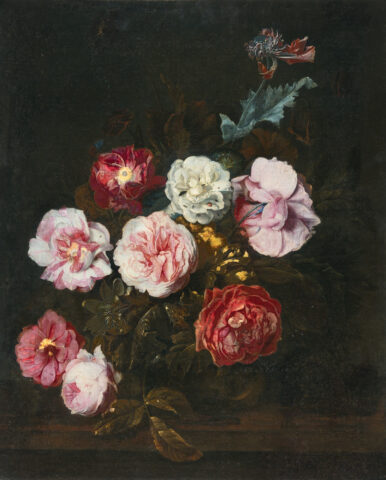Otto Marseus van Schrieck
Little is known about the origin and education of Marseus van Schrieck. Probably he first stayed in Paris, where he worked together with Willem van Aelst at the court of Anne of Austria, before he went to Italy together with Mattheus Withoss. In Florence, where he met van Aelst again, he worked for Grand Duke Cosimo III de Medici, and from 1652 at the latest he was in Rome and a member of the Dutch painters’ guild “Schildersbent” with the bent name “Snuffelaer” – the sniffer, because he always looked for plants and small animals in gardens.
His preference for colourful insects and small reptiles increasingly made van Schrieck the subject of his art. After initially painting lush floral still lifes, his depictions of the world of small animals brought him recognition and commercial success from the 1660s onwards – he can be traced to Amsterdam from 1663 at the latest, and according to Houbraken, his early biographer, he also stayed in England several times.
Van Schrieck is regarded as the main representative of the forest still life he developed, the so-called Sottobosco – from the 1660s onwards he increasingly specialised in depicting insects and reptiles living near the ground in the forest, which he also kept in terrariums for this purpose. His lifelike depictions, in which he also experimented with butterfly prints, of nature dramas were popular with clergy and nobility alike – during a visit to Amsterdam at the end of December 1667, Cosimo de Medici acquired three paintings.



